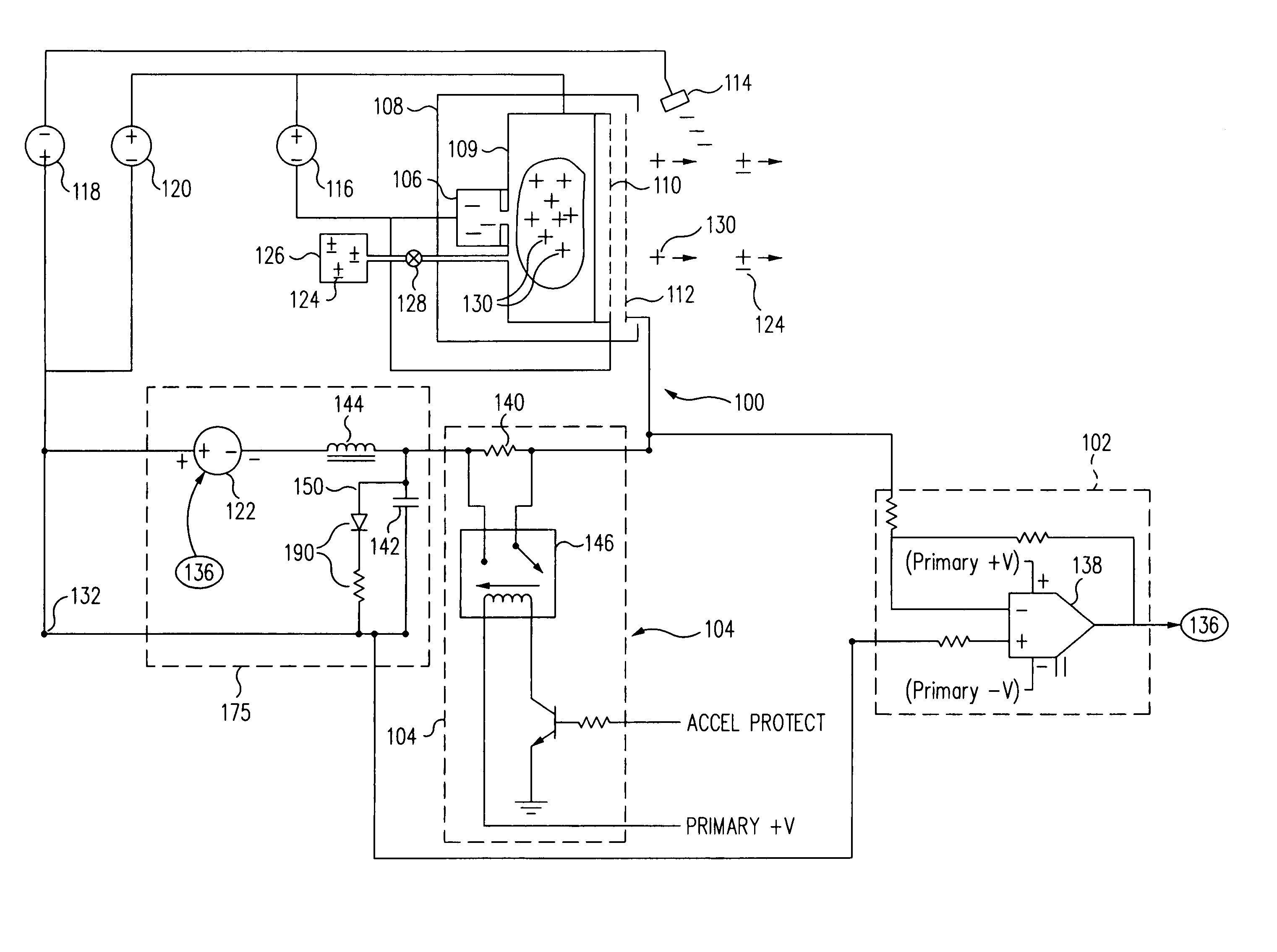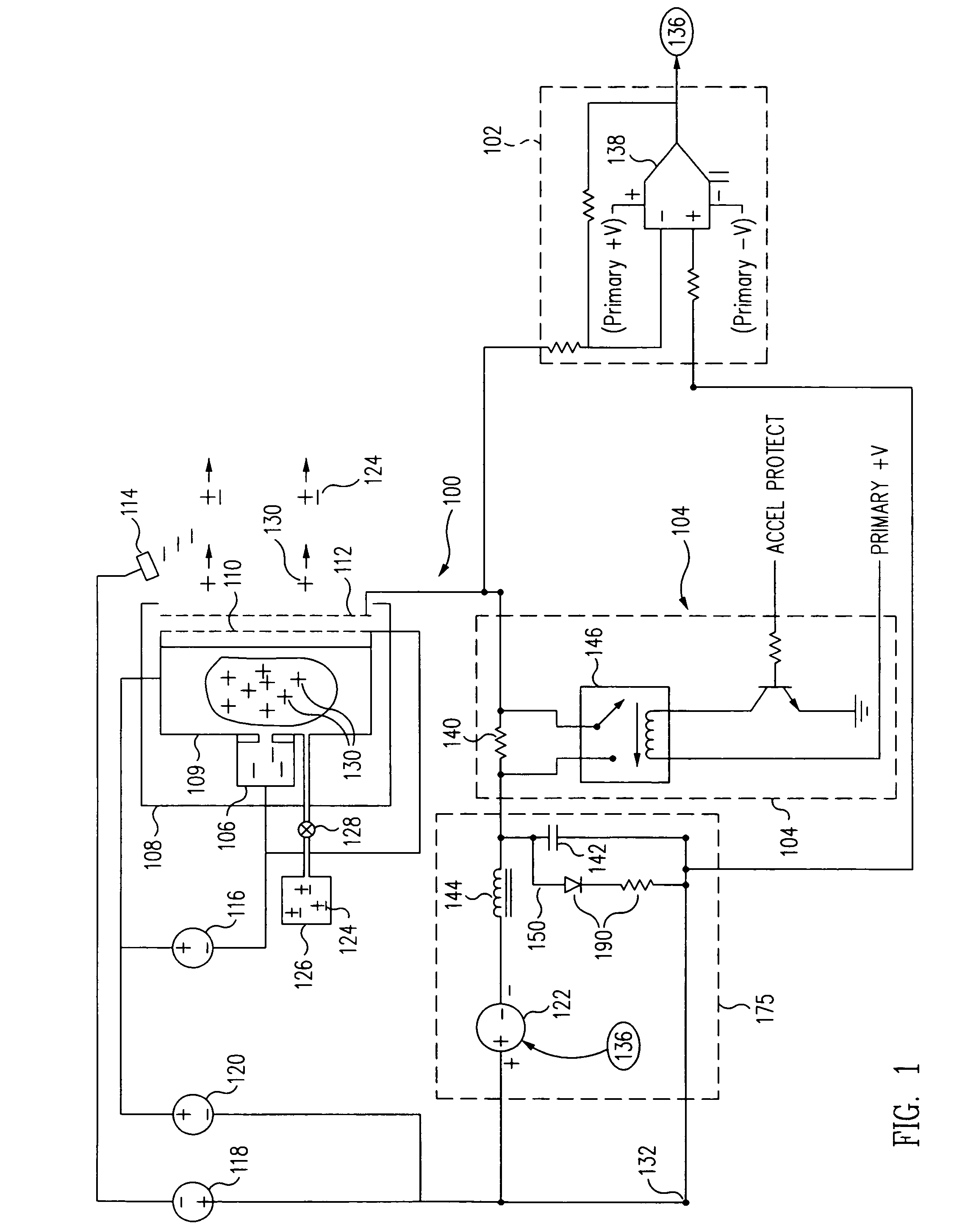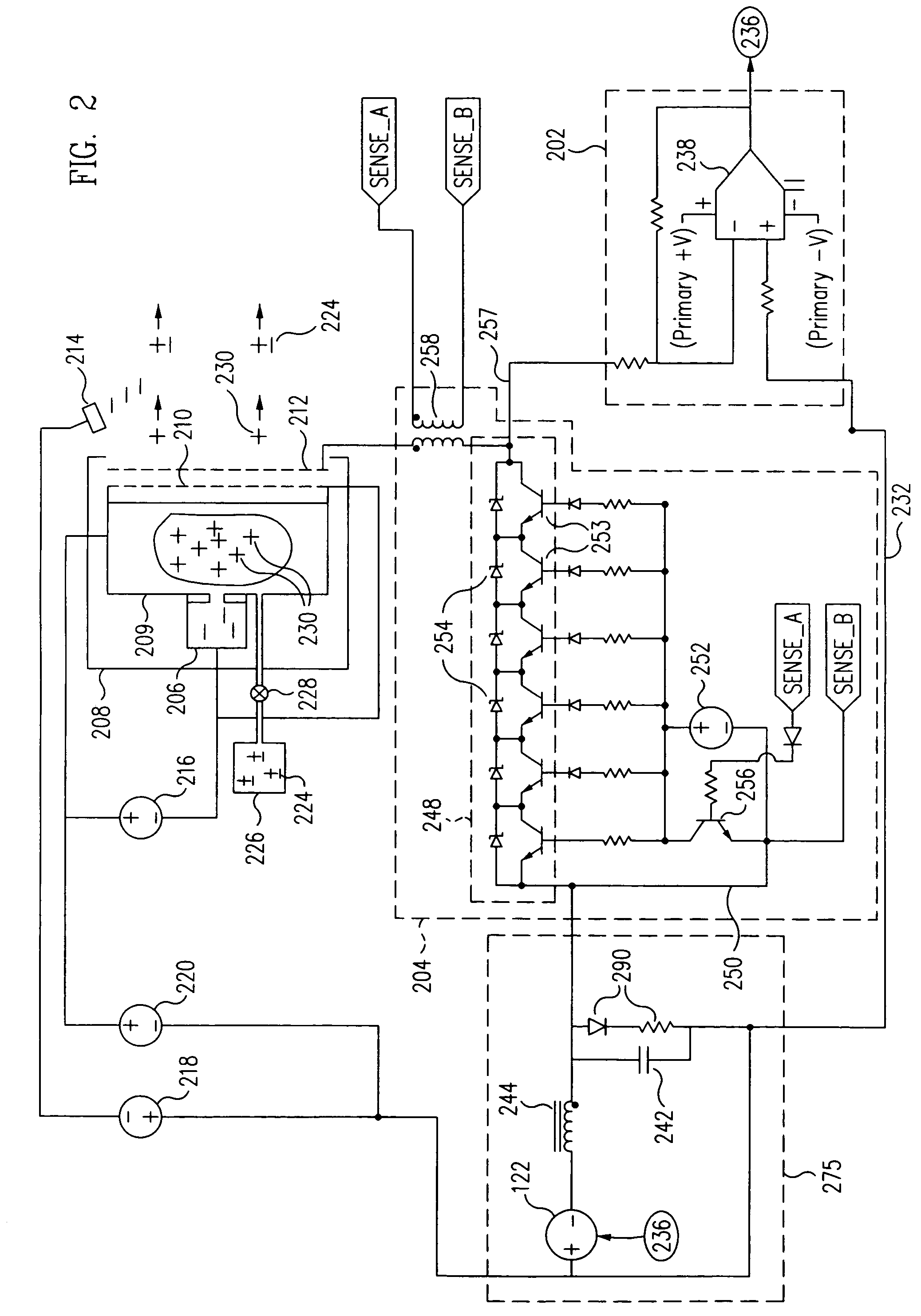Ion engine grid arcing protection circuit
a protection circuit and engine technology, applied in the direction of machines/engines, marine propulsion, vessel construction, etc., can solve the problems of additional damage to the screen and accelerator grid, electrical plasma arcs that occur occasionally between the screen and the accelerator grid, and the normal erosion of the accelerator grid, etc., to reduce or eliminate the damage to the grid caused by the arc
- Summary
- Abstract
- Description
- Claims
- Application Information
AI Technical Summary
Benefits of technology
Problems solved by technology
Method used
Image
Examples
first embodiment
[0021]During operation of the ion engine 100, plasma arcs can occur between the screen and accelerator grids 110, 112. These arcs are caused by various operational anomalies occurring in the engine, and can cause additional damage to the screen and accelerator grids over and above that caused by the normal charge-exchange ion erosion described above. This additional type of damage to the grids has been shown to make the occurrence of plasma arcs between the grids more frequent by degrading the high voltage integrity of the screen-grid-to-accelerator-grid interface. Such damage can result in a substantial reduction in the reliability and operational life of the engine. a grid arcing protection circuit, comprising two parts 102 and 104, for preventing or reducing this type of damage to the grids is outlined by the dashed lines of FIG. 1.
[0022]As illustrated in FIG. 1, in addition to a monitoring and sensing circuit 102 above, there is an arc protection circuit 104. The arc protection ...
second embodiment
[0027]As will by now be evident to persons of skill in this art, many modifications, substitutions and variations can be made in and to the materials, configurations and methods of implementation of the grid arcing protection circuit of the present invention without departing from its spirit and scope. For example, the first transistors 253 of the switch 248 of the second embodiment may be implemented either as BJTs or as MOSFETs, depending on the speed, current and voltage requirements of the particular problem at hand. Accordingly, the scope of the present invention should not be limited to the particular embodiments illustrated and described herein, as they are merely exemplary in nature, but rather, should be fully commensurate with that of the claims appended hereafter and their functional equivalents.
PUM
 Login to View More
Login to View More Abstract
Description
Claims
Application Information
 Login to View More
Login to View More - R&D
- Intellectual Property
- Life Sciences
- Materials
- Tech Scout
- Unparalleled Data Quality
- Higher Quality Content
- 60% Fewer Hallucinations
Browse by: Latest US Patents, China's latest patents, Technical Efficacy Thesaurus, Application Domain, Technology Topic, Popular Technical Reports.
© 2025 PatSnap. All rights reserved.Legal|Privacy policy|Modern Slavery Act Transparency Statement|Sitemap|About US| Contact US: help@patsnap.com



